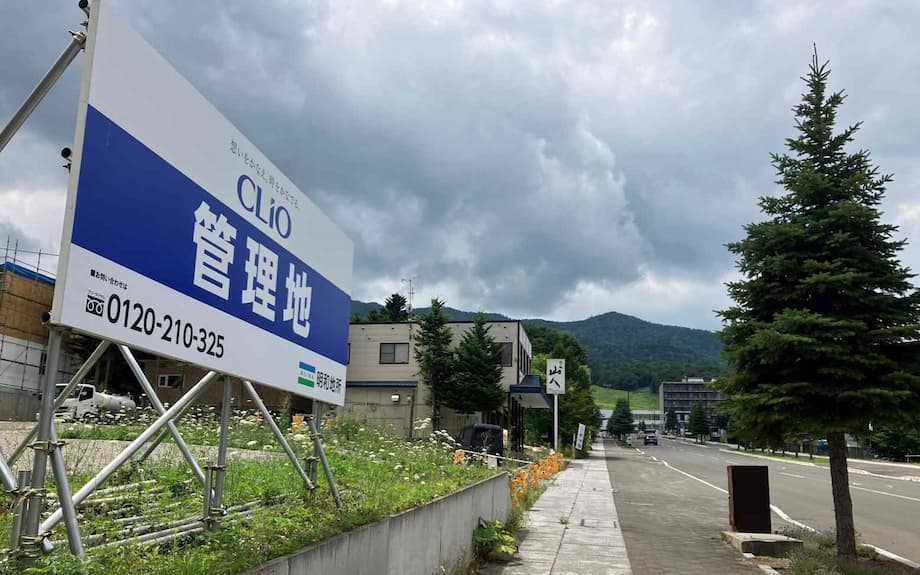Furano’s Transformation: From Quiet Town to Tourism Powerhouse
Furano, nestled in the heart of Hokkaido, Japan, has long been celebrated for its breathtaking lavender fields in summer and world-class powder snow in winter. Once a tranquil agricultural town, Furano is now at the epicenter of a tourism and property development boom that is reshaping its landscape, economy, and community. Developers and investors are increasingly eyeing Furano as the next Niseko—a resort area whose meteoric rise has made it a global name among skiers and property investors alike.
- Furano’s Transformation: From Quiet Town to Tourism Powerhouse
- What’s Driving Furano’s Tourism and Real Estate Boom?
- Developers and Investors Flock to Furano
- How Is Tourism Changing Furano’s Community?
- Why Are Investors Betting on Furano?
- Balancing Growth with Sustainability
- What’s Next for Furano?
- In Summary
In recent years, Furano’s appeal has expanded beyond its traditional seasonal peaks. The town now attracts visitors year-round, with international and domestic tourists flocking to its ski slopes, flower fields, and cultural events. This surge in popularity has triggered a wave of real estate investment, rapidly rising land prices, and significant changes for local residents.
What’s Driving Furano’s Tourism and Real Estate Boom?
Several factors have converged to fuel Furano’s transformation into a tourism and investment hotspot:
- Year-Round Attractions: Furano’s dual identity as a ski resort and summer flower destination draws tourists in both winter and summer. The region’s powder snow is among the best in the world, while its lavender fields and rolling hills attract visitors seeking scenic beauty and outdoor activities.
- Accessibility: Located about two hours from Sapporo and within reach of major airports, Furano is easily accessible for both domestic and international travelers.
- Authentic Japanese Experience: Unlike some internationalized resorts, Furano offers a more traditional Japanese town atmosphere, with local restaurants, festivals, and cultural sites.
- Investment Potential: The combination of rising tourist numbers and limited high-quality accommodation has created strong demand for new hotels, condominiums, and vacation homes.
According to government data, Furano now hosts about 250,000 foreign overnight guests annually—a 4.2-fold increase over the past decade and 1.7 times higher than pre-pandemic levels. In 2023, total tourist numbers (domestic and international) reached 1.89 million, nearly matching pre-pandemic highs.
Land Prices Skyrocket
The property market in Furano, especially in the Kitanomine area at the base of the ski resort, has seen explosive growth. Land prices in Kitanomine have risen fivefold in five years, with some plots selling for up to 2.5 million yen per square meter. In 2023, the district recorded a 20.1% year-on-year increase in standard land prices, the third-highest in Hokkaido and among the top nationwide. Government-assessed values near the ski slopes surged 27.1% this year, outpacing even the famed Niseko region.
This dramatic appreciation is not unique to Furano. Across Japan, tourism-driven destinations are experiencing similar trends. Nationally, the average price of land rose 2.7% in 2025, the fastest pace in over a decade, with tourist hotspots like Hakuba and Furano leading the way.
Developers and Investors Flock to Furano
The surge in tourism has attracted a wave of domestic and international developers. Notable recent projects and investments include:
- Meiwa Jisho (Tokyo-based developer): Acquired a 1,500 m² plot near the Kitanomine ski slopes, planning a hotel or hotel-condominium just 400 meters from the gondola. The site’s zoning allows for versatile development, including hotels, restaurants, and retail.
- Fenix Furano: Developed by Zekkei Properties, this luxury ski-in ski-out condominium in Kitanomine offers 33 units and 62 keys, targeting both winter and summer visitors.
- Furano Lofts and Chalet: Local company Flint Furano has introduced high-end accommodations with private onsens and five-star amenities.
- Shikauchi Furano by Kuukan Inc.: Boutique private homes blending comfort and adventure, located between Farm Tomita and the ski resort.
Foreign investment is also on the rise. A 2019 report noted that around 50 lots in Kitanomine were owned by foreign buyers, a number that has likely grown since. The influx of international capital is evident in the proliferation of “FOR SALE” signs and foreign-language signage throughout the district.
Expanding Accommodation Capacity
To meet growing demand, Furano’s hotel bed capacity is set to expand from 5,400 beds in 2023 to 6,400 by 2026. New hotels, condominiums, and boutique lodgings are under construction, with both local and international brands seeking a foothold in the market.
How Is Tourism Changing Furano’s Community?
While the tourism and property boom has brought prosperity and new opportunities, it has also sparked tensions and challenges for Furano’s long-time residents.
Rising Costs and Displacement
Soaring land prices and rapid urban changes have made it difficult for some locals to afford property or remain in their neighborhoods. As stylish new buildings replace traditional structures, some residents lament the loss of the town’s old charm. The population of Furano has declined from 23,000 to 19,000 over the past decade, even as the number of foreign residents has quintupled.
Social and Cultural Friction
The influx of foreign tourists and investors has led to cultural misunderstandings and friction. Some visitors are unfamiliar with local customs, such as garbage sorting and safe conduct on public roads. Trespassing on farmland for scenic photos has become a concern for local farmers. Additionally, the number of foreign tourists involved in backcountry skiing accidents is rising, leading to costly rescues often covered by taxpayers.
Longtime resident and local business owner, Mrs. Sato, expressed her concerns:
“Furano used to be a quiet place where everyone knew each other. Now, it feels like a different town. The new hotels are beautiful, but I hope we don’t lose what makes Furano special.”
Labor Shortages and Economic Shifts
Despite the economic boom, Furano faces severe labor shortages, especially in hospitality and construction. Some hotels are unable to operate at full capacity due to a lack of staff. Many local high school students plan to leave after graduation, prompting the city to organize job fairs and hands-on experiences to encourage them to stay.
Why Are Investors Betting on Furano?
Furano’s unique combination of year-round tourism, authentic local culture, and capital growth potential makes it especially attractive to property investors. Unlike many ski resorts that struggle during the “green season,” Furano’s summer tourism is even busier than winter, with over 1.5 million visitors coming to see its famous flower fields. This provides opportunities for year-round rental income, a key differentiator from other Japanese resorts.
Developers are also drawn by Furano’s accessibility, infrastructure, and the town’s proactive approach to tourism development. The presence of established brands like Hokkaido Tracks Resort Properties, which played a major role in Niseko’s rise, signals confidence in Furano’s future.
Comparisons to Niseko
Niseko’s transformation into an international ski destination has set a precedent for Furano. However, Furano offers a different experience—more sunshine, a central town with easy access to amenities, and a less internationalized, more “Japanese” atmosphere. Investors see Furano as a chance to get in early on the next big thing in Japanese resort real estate.
Balancing Growth with Sustainability
As Furano’s star rises, the challenge will be to balance economic growth with the preservation of its cultural and natural heritage. Local authorities, developers, and community groups are increasingly aware of the need for sustainable tourism practices, responsible development, and community engagement.
Efforts are underway to:
- Encourage responsible tourism and educate visitors about local customs
- Promote job opportunities for local youth to stem population decline
- Support local businesses and maintain the town’s unique character
- Implement zoning and development regulations to manage growth
As Ishii, a major investor in Furano, noted:
“Furano’s potential lies in its ability to offer something for everyone—nature, culture, adventure, and relaxation. But we must work together to ensure that growth benefits everyone, not just a few.”
What’s Next for Furano?
Furano’s transformation is still unfolding. With more hotel projects in the pipeline, rising international interest, and a growing reputation as a year-round destination, the town’s future looks bright. However, the voices of longtime residents and the lessons of other resort towns like Niseko will be crucial in shaping a sustainable path forward.
As Furano navigates this period of rapid change, the question remains: Can it retain its unique charm and community spirit while embracing the opportunities of global tourism and investment?
In Summary
- Furano, Hokkaido, is experiencing a tourism and property development boom, driven by year-round attractions and rising international interest.
- Land prices in key areas like Kitanomine have surged fivefold in five years, outpacing even established resorts like Niseko.
- Developers and investors are flocking to Furano, with new hotels, condominiums, and luxury accommodations under construction.
- The boom has brought prosperity but also challenges, including rising costs, labor shortages, and cultural tensions.
- Efforts are underway to balance growth with sustainability and preserve Furano’s unique character.
- Furano’s future as a premier Japanese resort destination will depend on collaboration between the community, developers, and policymakers.




